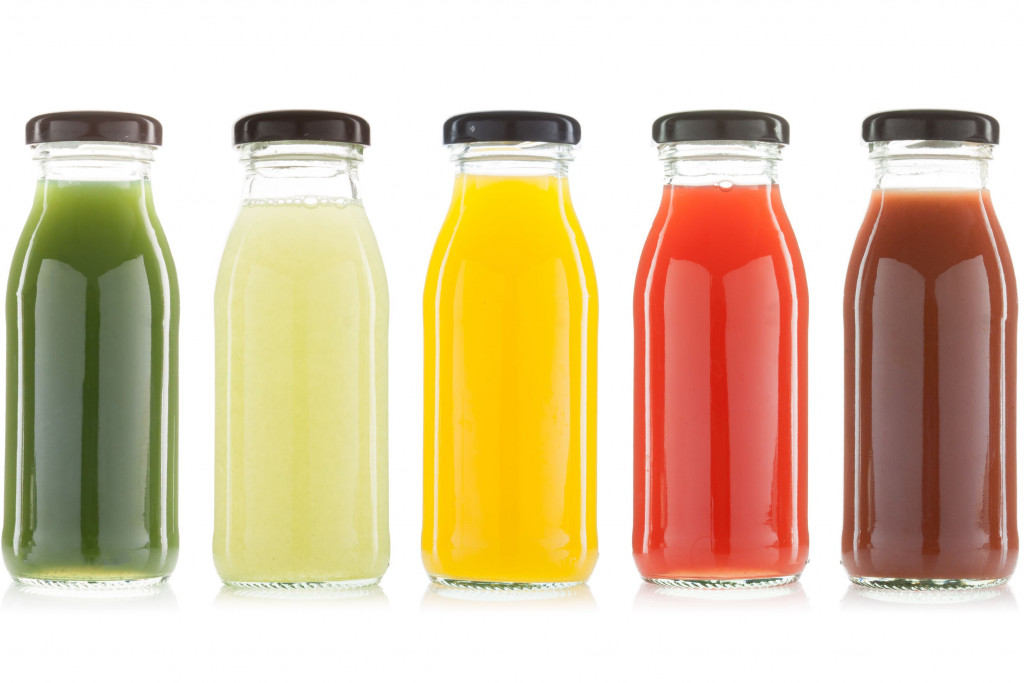FYI, Your Nutritionist Hates That “Healthy” Juice You’re Drinking
Philadelphia nutritionists weigh in on juice's false "health halo."

Photograph by iStock/onairjiw
The juicing trend doesn’t seem to be going anywhere. No one bats an eye when a new cold-pressed juice bar pops up on their block, and you don’t need to shop at a health-food store to find an entire refrigerated case stocked with a rainbow of juices.
In a 2015 article on the trend, the Los Angeles Times basically called juicing the health-conscious person’s Egg McMuffin: quick and convenient, but without the guilt. I mean, on paper it makes sense: juices are made with whole fruits and vegetable, and lots of them have no added sugar. That’s helped establish them as a fixture of the health world, right up there with avocado toast.
But has juice really earned this healthy reputation? According to Philadelphia nutritionists: No, no it absolutely has not.
“Juice really has a health halo it doesn’t deserve,” says registered dietitian Emily Pierce of OnPoint Nutrition.
The problem with many “healthy” juices, registered dietitians Liz Smith and Melissa Bailey of Two Hungry Work Wives explain, is that the process strips away the fiber you’d get from eating a whole piece of fruit or vegetable. That fiber is what helps you feel full and satisfied after eating — a feeling you don’t get from just sipping a juice.
“Truth be told, there’s no such thing as a ‘healthy juice,'” says registered dietitian Sheena Pradhan of Nutritious Balance. “In most cases, a cup of juice is just a cup of sugar water.”
Part of the issue is that in drinking a “healthy” juice that’s sweetened with fruit is you may very well be drinking multiple servings worth of fruit. Take, for example, Naked Juice’s “Green Machine.” It’s green so it’s got to be good, right? Well, here’s what’s inside: 2 3/4 apples, 1/3 mango, 1/12 pineapple, 1/2 banana, and 1/3 kiwi.
That’s a lot of fruit! I mean, when’s the last time you sat down and ate almost three apples — plus a fruit salad? So while a 15.2-ounce Green Machine has zero grams of added sugar, it still has 53 grams of total sugar. For reference, a 16-ounce Coke has 52 grams of sugar. Yikes!
Granted, not all healthy juices are created equal. While Pradhan says she avoids pre-bottled juices — even if they’re cold-pressed — she’ll sometimes go to a juice bar for a fresh-made beverage, as long as it’s free of fruit (with the exception of lemon or lime).
“My favorite combinations for juices usually involve greens (like kale), lemon, ginger, cayenne, turmeric, carrots, and beets — and easy on the carrots and beets (the higher-sugar vegetables),” says Pradhan.
If you are headed to a juice bar — Ivy Eliff of OnPoint Nutrition says she likes to sometimes hit up Sip-N-Glo, for example — then Smith and Bailey recommend sticking to things that are mainly vegetable-based, like Sip-N-Glo’s “Clean Green.”
Ultimately, juices — particularly fruity ones — seem to have slipped past many of our health radars. But Pierce hopes that the health myths surrounding juice won’t last.
“Maybe in a few generations this won’t even be a question!” says Pierce.
Like what you’re reading? Stay in touch with Be Well Philly—here’s how:
- Like Be Well Philly on Facebook
- Follow Be Well Philly on Instagram
- Get the Be Well Philly Newsletter
- Follow Be Well Philly on Twitter


